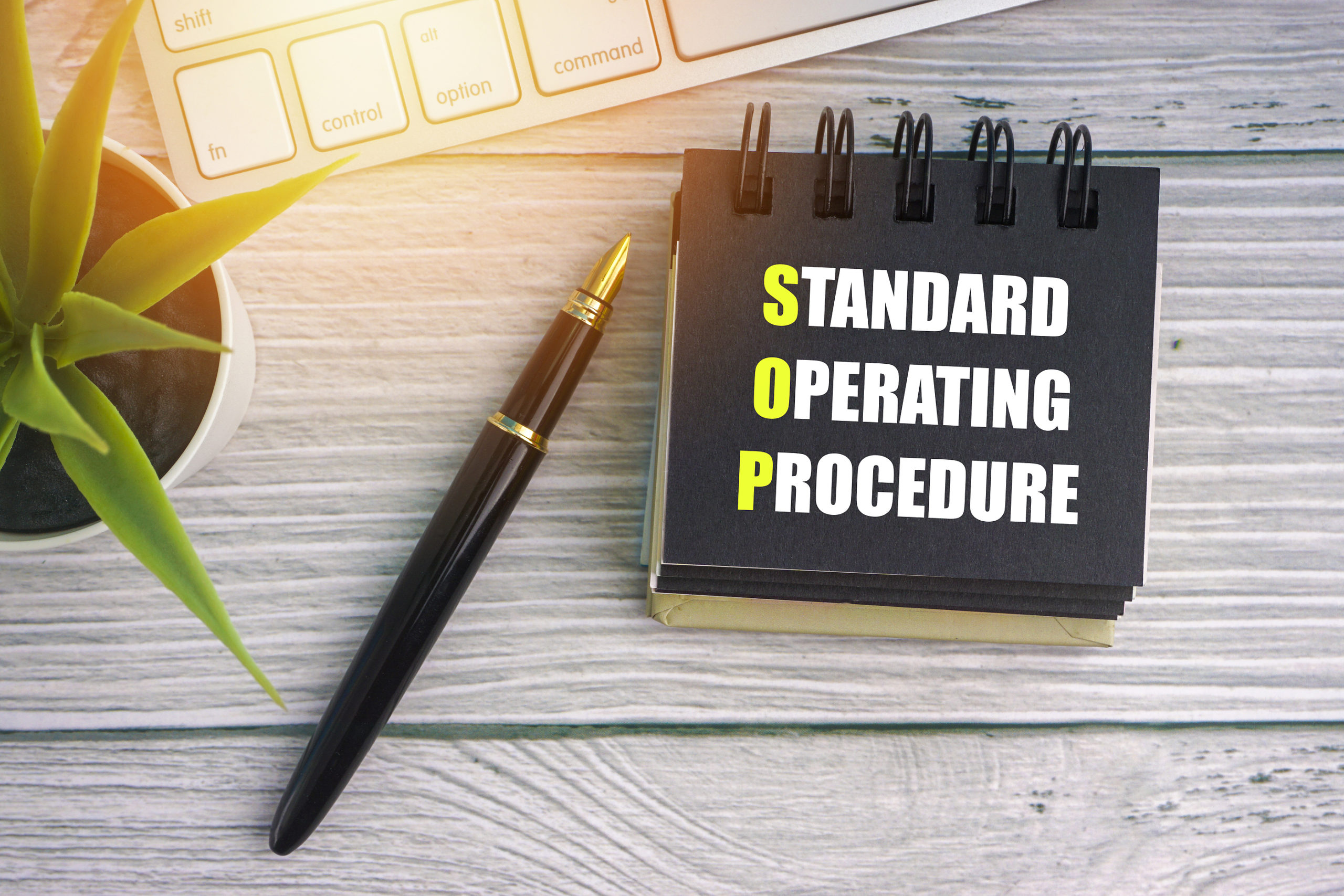Why Every Company Should Implement Standard Operating Procedures (& How to Get Started!)

When a business owner is first getting started, a business tends to be more fluid. There are fewer “set in stone” rules and people are learning as they go. While this can create some agility in an organization, the lack of standard operating procedures (SOPs) can hold a company back from excelling.
Certain activities should be handled in the same way each time they’re done. This can be something as simple as how the business line is answered to more complicated activities such as handling leads in the sales pipeline.
SOPs often translate to network and technology areas of a company, such as explaining how passwords should be handled or setting restrictions for posting company data on social media.
Why is it important to implement SOPs, even if you have a smaller company?
Reduce Mistakes
In a survey of global companies related to security risk, 54% of respondents said employee mistakes were the biggest risk to the company.
Without an SOP to follow for a specific process, you’re relying on employees just picking up how things are done and then repeating the process. What happens if they get busy or if you have a newbie?
They may think it’s okay to skip a step because it’s not written down anywhere that this thing HAS to be done. This can lead to errors that cost you money and/or customers.
Having a standard operating system in place reduces the risk of a mistake because a step-by-step requirement is written down and easy for anyone to reference.
Improve Efficiency & Productivity
When someone has to stop and decide how to do a certain process each time they do it, it reduces efficiency and takes them more time to accomplish a task. Without an SOP to follow, someone might handle a certain lead process one way today, and then decide to handle it a different way next week.
Decision-making for recurring tasks is unnecessary, but without an SOP to go by, employees may feel they have to or have the freedom to do things a different way.
Having an SOP in place removes that extra step of having to decide each time how to handle a function because all they need to do is follow the stated procedure.
Boost Trust in Your Company from Consistency
Your customers notice when your company is consistent and when it’s not. For example, if you handle a quote/order/shipment process in different ways each time they order from you, they’ll get the impression that your company isn’t very organized.
If every transaction a company has with you is like clockwork due to consistency, they’ll trust your company more and feel you’re a reliable partner.
SOPs put that foundation in place that keeps your most vital procedures consistent, which gains you trust and improves productivity as well because things are running smoothly.
Provide the Guardrails Needed for Security & Safety
It’s critical to have an SOP in place when it comes to two important areas: employee safety and cybersecurity.
SOPs, such as the need for safety glasses whenever anyone is using a paint sprayer, can ensure that you don’t have any unnecessary accidents.
Cybersecurity is another area where you need the guardrails of a standard operating procedure. For example, your SOP might state that any new IoT devices being added to your network, need to be approved and configured by your IT team first to ensure they’re not a security risk.
Ensure No Dropped Balls
SOPs help mitigate the chance of balls being dropped that hurt your business. You may have an SOP that dictates what packaging is used on each shipment sent out to customers, for example.
Without that, your shipping staff may just be packing things as they see fit. One person may think it’s obvious that packing peanuts need to be used, while a new employee may not realize that, so you end up with higher replacement costs due to damage.
How to Get Started Setting Up SOPs for Your Company
-
Develop a List of Critical Processes
Start with your most business-critical processes or functions that need a standard operating procedure.
Once you get an SOP in place for these, you can then identify the next-level processes that should be covered.
-
Plan the Process for Developing Your SOPs
Will you put your SOPs in both offline and online documents? Who will need to be included in the process of writing and approving the SOPs?
You’ll want to plan the development process by answering those types of questions. During the planning, also include an estimated timeline for completing and introducing the new SOPs.
-
Collect Information from Those That Do The Process/Function
You don’t want to come up with something as important as SOPs off the top of your head. Collect input and information from others in your company, especially those that do the process or function in question.
Pull in experts, like your IT provider, for input on where technology and automation can be used to make a standard operating procedure more efficient and reduce the risk of human errors.
-
Write, Review & Implement Your SOPs
Next, your team will write up the SOPs for the critical processes you identified. Then have everyone review them until you get to your finished version.
Next, you’ll want to review the SOPs in detail with your team and implement them across your organization.
-
Maintain & Update SOPs
Standard operating procedures can get outdated if you don’t revisit them regularly. For example, you might adopt a new barcode scanning system that makes one of your SOP requirements irrelevant.
Maintain your SOPs and update them as needed as your business evolves.
Technology Can Automate Many of Your SOP Requirements
C Solutions can help your Orlando area business identify where technology can automate SOP requirements to boost efficiency.
Schedule a free consultation today! Call 407-536-8381 or reach us online.
